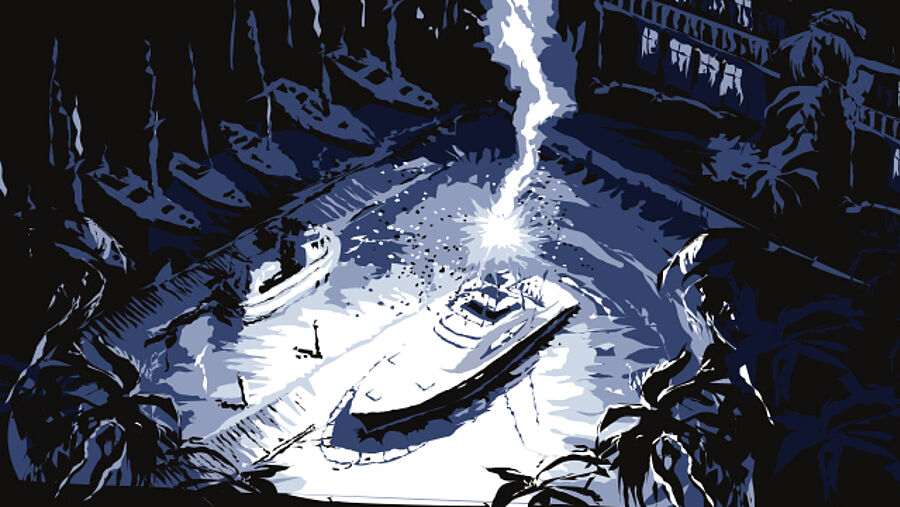How to minimise the impact
Lightning protection
According to statistics, the earth receives up to 40 lightning strikes per second. Jochen Dahm, team leader of the Superyacht Claims Team in Hamburg, explains why this can pose a particular problem for yachts.

Pantaenius handles between 200 and 260 claims of lightning damage to boats per year, and the trend is rising. Although this figure is just a small percentage of the total amount of claims, the individual sums caused by lightning are usually twice as high as the average reference value in the Pantaenius damage statistics, as Jochen reports: "As a rule, the electronics are the first victim on board and it can take weeks and months to get the consequences eliminated.”
Many yachts have connected bus systems from the TV in the salon via the ambient lights up to the navigation systems and engine controls without safety circuits or isolated redundant systems. A direct hit to this network may not only affect parts of the yacht – more than often the yacht is taken out of service completely and is not able to operate at all any more. Obviously to check such a system and to get it back to working fashion takes a lot of time. Additionally, these days, it may take a greater time to purchase all needed parts to get the complex system running again.
LIGHTNING PROTECTION SYSTEM IS RECOMMENDED
The yacht itself is also in danger: “The lightning searches for the path with the least resistance to grounding potential. If it encounters resistance, rudder blades can be split, masts or the standing rigging can burst and hull or keel casings can be blown away. In order to minimize these risks, use of a lightning protection system is strongly recommended."
The lightning protection system may not prevent lightning strikes, but it allows for the impact point and path of the lightning current to be better controlled. The enormous current of a lightning bolt, which can reach between 20,000 and 100,000 amperes, must be conducted into the water in the fastest and easiest way. Unfortunately, there is still no standardized regulation on lightning protection for yachts. Although large yachts built according to class regulations are often equipped with such systems, there is no obligation for the shipyard to do so.
LIGHTNING CAN JUMP OVER YACHTS
It is a common misconception that motor yachts are less affected than sailing yachts. However, it is not always a direct hit. Lightning can strike the water, jumping over yachts or causing damage to yachts in the immediate surrounding area through induction: "We record damage in both the sailing and motor yacht areas, whereby the vessels are usually in port when the lightning strikes. Most recently, we have been handling several claims for damage amounting to several hundred thousand Euros. In the vast majority of cases, the owners did not have any lightning protection devices in place. As a direct result, the yacht was not usable for half a year or longer” - Jochen points out - “but currently we have some cases with sufficient lightning protection systems that avoided far bigger damages and long-term stays at the shipyard.”
There is a system on the market that claims to help a yacht avoid a lightning strike altogether, by changing of the conductivity of the air in the surrounding area. “This system is promising and time will tell how good it really is.” – Jochen is convinced that new techniques and owner awareness will help to prevent this kind of severe damages and knock outs. So a working lightning protection system is appreciated and rewarded by Pantaenius.
In many cruising areas with a high incidence rate of thunderstorms, the deductible is doubled in the case of lightning damage if the yacht does not have functional lightning protection, but the deductible is not applied as soon as such system is properly installed.